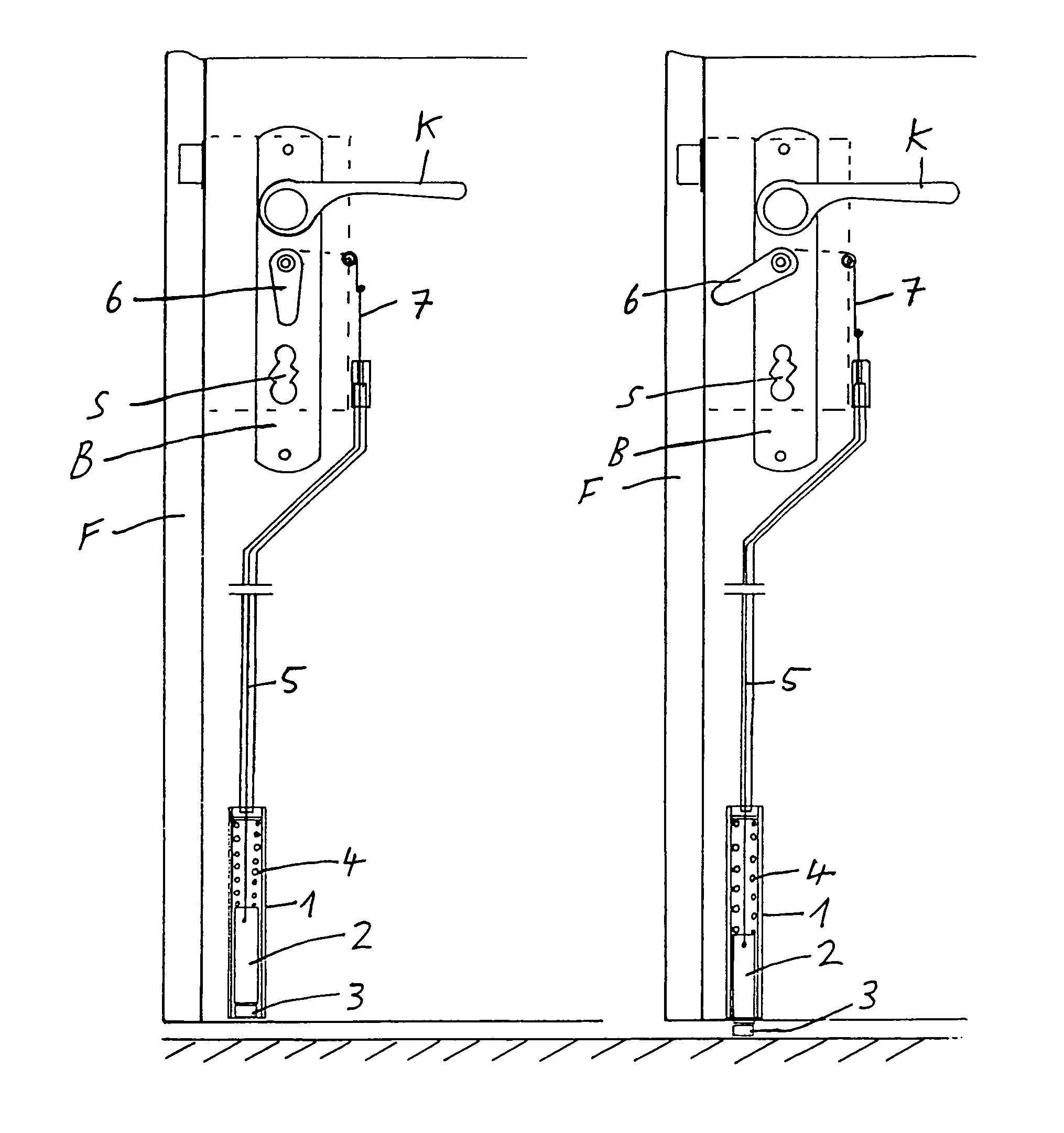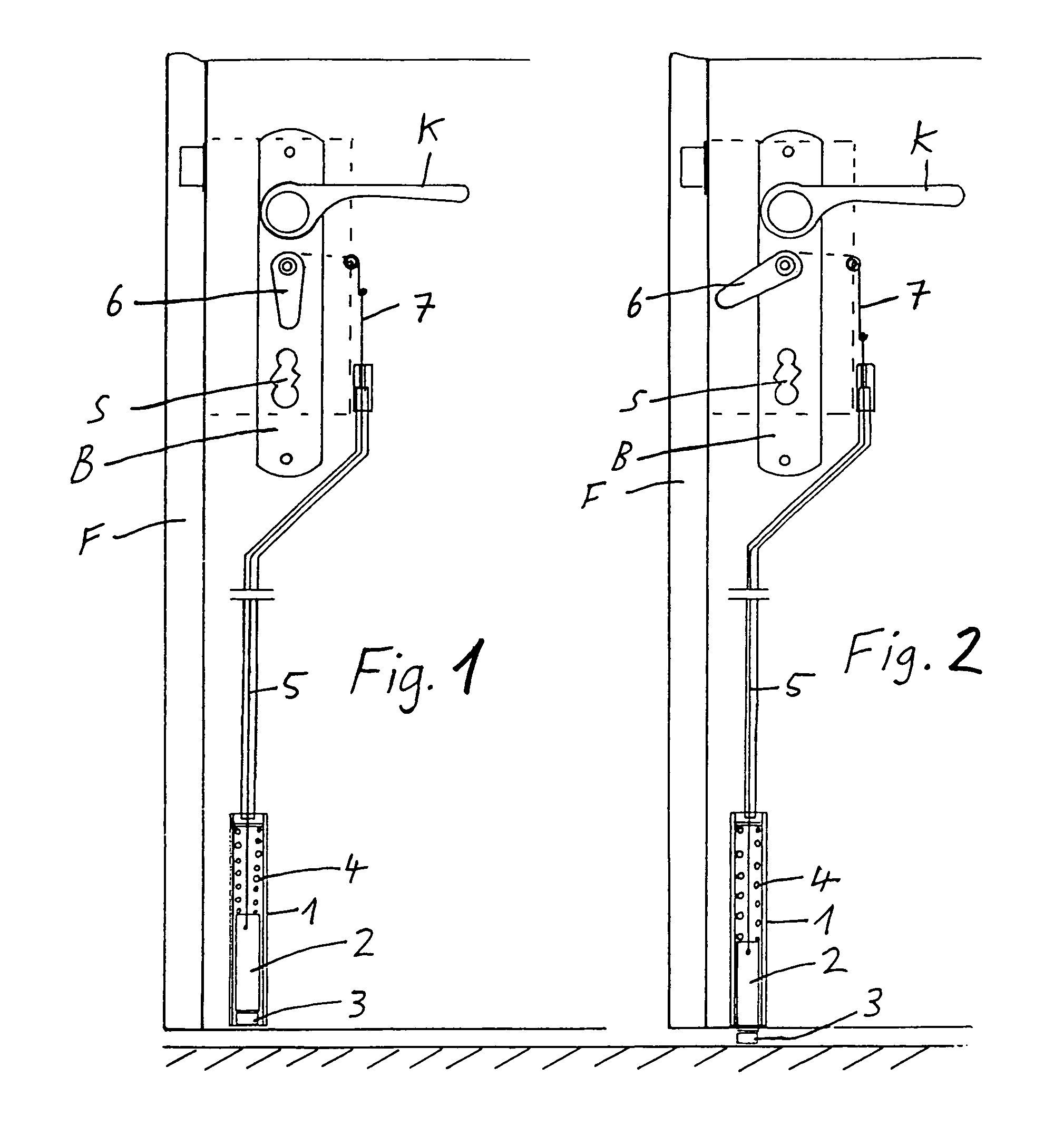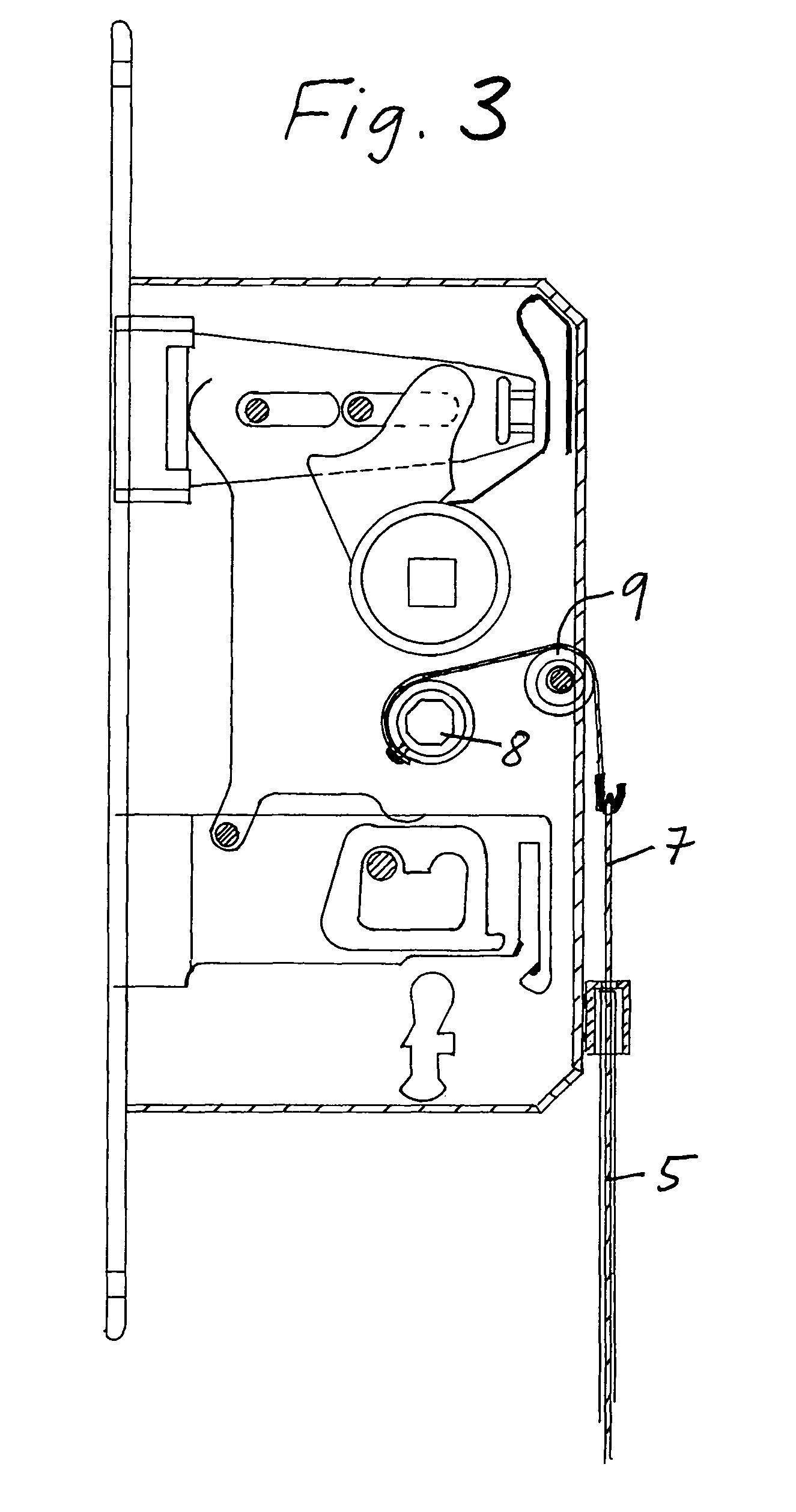Door panel integrated door stopper with operating mechanism integrated into the door lock housing
a technology of operating mechanism and door lock, which is applied in the direction of latching locks, carpet fasteners, dwelling equipment, etc., can solve the problems of not really locking the door in a position, glass in the door to break or damage to furniture or walls, and unattractive and cumbersome devices
- Summary
- Abstract
- Description
- Claims
- Application Information
AI Technical Summary
Benefits of technology
Problems solved by technology
Method used
Image
Examples
Embodiment Construction
[0020]The door stopper according to the invention includes a housing 1 installed in the lower area of the door panel with a door stopper bolt 2 and a door stopper foot 3 and a compression spring 4 biasing the door stopper bolt 2 downwardly. By way of a connecting member 5, preferably in the form of a Bowden Cable, the door stopper bolt 2 is connected to an operating mechanism arranged in the lock housing of the door.
[0021]In the embodiment shown in FIGS. 1 to 5, the operating mechanism for the door stopper includes an operating lever 6 disposed at the door fitting B. FIGS. 1 and 2 show the arrangement in the door release or rest position or, respectively, in the operating position of the door stopper. FIG. 3 shows the operating mechanism for the door stopper in the door lock housing while FIG. 4 shows the door stopper mechanism operating lever 6 on the door fitting B and FIG. 5 is a plane view of the door fitting B modified to accommodate the door stopper mechanism operating lever 6...
PUM
 Login to View More
Login to View More Abstract
Description
Claims
Application Information
 Login to View More
Login to View More - R&D
- Intellectual Property
- Life Sciences
- Materials
- Tech Scout
- Unparalleled Data Quality
- Higher Quality Content
- 60% Fewer Hallucinations
Browse by: Latest US Patents, China's latest patents, Technical Efficacy Thesaurus, Application Domain, Technology Topic, Popular Technical Reports.
© 2025 PatSnap. All rights reserved.Legal|Privacy policy|Modern Slavery Act Transparency Statement|Sitemap|About US| Contact US: help@patsnap.com



